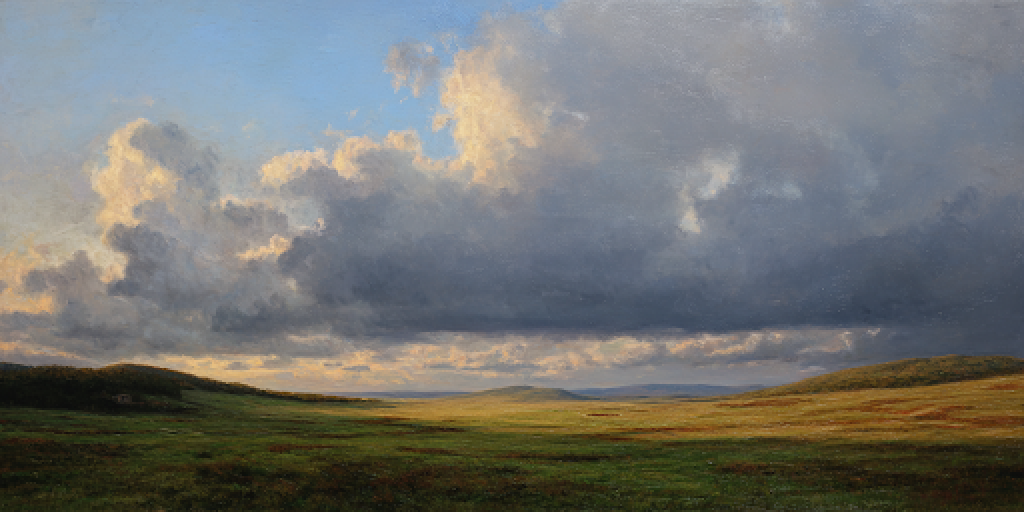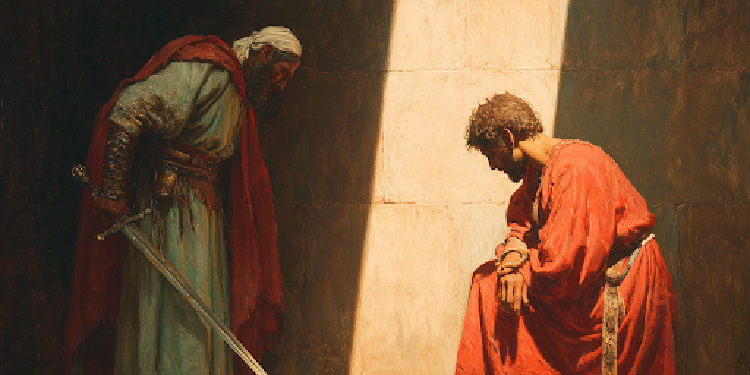It feels as though we live in different realities. Whether you’re liberal or conservative, white or black, queer or straight, our worldviews have never felt further apart. The last several years have done more to pull us each into our own ideological corners than any years of my life. From a global pandemic, social uprisings, tumultuous politics, and a news media landscape that thrives off our division, I have never felt more isolated from my neighbor.
And truly it feels as though we live in different realities. I was on a date the other week and not fifteen minutes into our hot chocolate did it become apparent that we came from different political parties and voted for different presidential candidates. The chasm between our worldviews was immense and after forty minutes of conversation, we found very little common ground to stand on. There was no second date. There is already a circle big enough to hold us all — Earth.
To underscore our divisions, our world is marked by wild and vapid conspiracies that have run like fire through our cultural and political landscape. Each of our social media profiles is curated to feed us articles that confirm our biases and worldviews. The 24-hour news cycle exists to make mountains from molehills, thriving off of our outrage. And our political machine is increasingly non-representational because of tactics like voter suppression and gerrymandering which create more angst and more frustration.
The circles of our communal identities are getting drawn smaller and smaller. If we cannot find some common ground, some common uniting earth on which to stand with each other, we will all become distant and driven individualists, looking for someone to punish or expel. We each need to transcend our small stories about reality to live in reality. To do so, we need to draw a circle big enough to hold us all together inside its embrace.
Fortunately, there is already a circle big enough to hold us all — Earth. You are embedded in a dense ecological web of interrelatedness. The water in your body has been collected from snow, rain, and cloud. The iron in your blood, a gift from the animals who gave their lives for your sustained heartbeat. The salt in your tears has accumulated in your body from a thousand oceans over a thousand lifetimes. You are a member of the communion of saints which includes microorganisms, trees, fungi, and birds. Every breeze a whispered prayer to the Creator and every thunderclap a hymn to Creation.
Restoration scripture, revealed by Joseph Smith, paints a picture of a cosmos and Earth soaked and saturated with divine light. It is as if you could pluck any old stone off the ground and squeeze it to feel the Light of Christ running over your hands like water. As Elizabeth Barrett Browning writes, “Earth’s crammed with heaven, And every common bush afire with God, But only he who sees takes off his shoes.”
The Earth is quite literally the common ground that unites us all. You and I might live in different ideological realities, but we share this one Earthy reality. The Earth is our shared external reference point. Our embeddedness in the great ecological chain unites us as a family. Me, you, the birds, and trees are kin. Our shared genetic heritage transcends billions of years.
If we as a human community need to cross the chasms of our ideological divides, I suggest that we meet on the common ground of the Earth. If we need to practice bipartisanship let us do it in defense of the Earth. If we need to lay down our stories about ourselves and each other, let us do it under cottonwoods and bristlecone pine.
While I might be a tree-hugger, this is not some tree-hugging-pie-in-the-sky wish. We can do it because we have done it. During the wildly divided and partisan Trump years, one of the only bills to successfully pass through Congress with bipartisan support was the John D. Dingell, Jr. Conservation, Management, and Recreation Act. This public lands package protected more than two million acres of land in the United States (much of which was in Utah!) and also permanently funded the Land and Water Conservation Fund. As well, in December of 2020 Congress passed another bipartisan bill that promotes carbon capture technology, the reduction of diesel emissions, and implements a phase-down of hydrofluorocarbons. Cross our partisan divides to unite in defense of the Earth.
Regardless of the success or failure of these bills, what they demonstrate is that the Earth is where we can meet to cross the partisan divide. Earth is where we can practice unity. And it is urgent that we begin this practice immediately. The United States loses a football field worth of natural area every 30 seconds. This tragic pace is set by our voracious consumer culture bent on more, more, more. Tragic because nature and wild spaces are non-renewable resources. Once they’re gone, they’re gone and won’t restore on a human timescale.
The next decade will prove to be an inflection point. Whether or not we as a community can cross our partisan divides to unite in defense of the Earth will determine our legacy as Latter-day Saints, a nation, and as a world, for centuries to come.
Luckily, people have already begun gathering on common ground to meet this challenge. To date, 50 countries have pledged to protect 30% of the Earth’s oceans and land by 2030, including just recently the United States. This is an ambitious goal. And it can only be achieved by each of us across the country stepping into local common ground and encouraging our elected leaders, regardless of party, to act in defense of the Earth.
Wherever you are in this country, there is a patch of Earth that needs defending. In Utah that looks like preserving cathedral-like red rock landscapes for the sake of future generations. In the Great Lakes area, that looks like protecting the Boundary Waters. Or in the southeast, that looks like restoring fragile and crucial coastal mangrove forests.
However, a strictly utilitarian approach can distract from the sacred responsibility we have to our planet. God’s divine presence saturates every landscape. This much is obvious to anyone who has seen the golden evening sunshine sweep through a canyon to light up vermillion cliff sides — heard the soft tinkling of rain on a glassy forest lake — or felt the power of an ocean wave roll through you. This wild Earth is God’s embodied home.
When both biblical and Book of Mormon prophets did not have access to a temple, they sought God in nature. What a grace this is. No matter who you are, just or unjust, God sends the rain. In nature, you can viscerally encounter divine presence and your own creatureliness in temples made from misty rainforests, implausibly high mountains, or delightfully sparse deserts. Truly, this Earth is a temple cut out of the mountains without hands. And it is in this natural temple that we can meet each other to practice unity, on the common ground of red sandstone, grassy plains, and salty seashores.
Coda
Meet me on the sun-soaked sandstone of Utah’s wildlands. Together we will leave our realities to meet in reality. There to encounter the God of redrock, sagebrush, and cryptobiotic soil. We will help each other through canyons and sand traps as we traverse a beloved landscape. Listen as the canyon wren and summer crickets sing hymns to our God—and theirs. Our differences will slip away as we yoke together in defense of this sacred Earth and partake of the sacrament of the real.
Just remember to drink water and wear sunscreen.

















